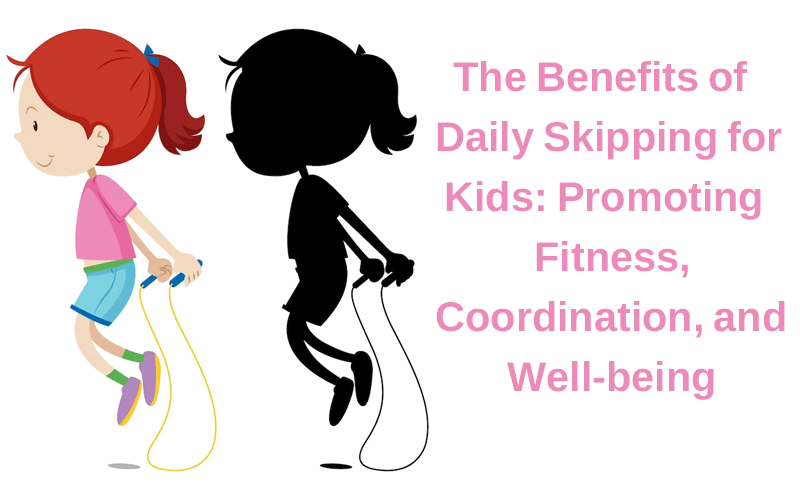Physical activity plays a crucial role in children’s development, and one fun and effective way to engage them in regular exercise is through skipping. Skipping, also known as jump rope, offers a wide range of benefits for kids, from improving cardiovascular fitness to enhancing coordination and fostering mental well-being. In this article, we explore the numerous advantages of incorporating daily skipping into children’s routines, highlighting its positive impact on their overall health and well-being.
Cardiovascular Fitness and Endurance:
Skipping is a fantastic aerobic exercise that gets the heart pumping and boosts cardiovascular fitness in kids. The rhythmic jumping motion elevates heart rate and enhances lung capacity, strengthening the cardiovascular system. Regular skipping sessions help children build endurance, enabling them to engage in physical activities for longer periods without getting tired easily.
Coordination and Motor Skills Development:
Skipping involves the coordination of hands, eyes, and feet, which helps enhance motor skills and hand-eye coordination in children. The repetitive nature of the activity challenges their ability to synchronize movements, improving balance, agility, and overall body coordination. As they master different skipping techniques, children become more confident in their physical abilities and enjoy a greater sense of control over their bodies.
Bone Health and Strength:
Skipping is a weight-bearing exercise that promotes bone health and strength in children. The impact of the jumps puts stress on the bones, stimulating bone density and growth. Regular skipping helps in developing strong bones, reducing the risk of osteoporosis and fractures later in life. It also contributes to the growth and development of muscles, improving overall strength and flexibility.
Weight Management and Physical Fitness:
Daily skipping can be an effective tool in managing weight and promoting physical fitness in children. It is a calorie-burning exercise that increases the metabolic rate, aiding in the burning of excess calories and body fat. Regular skipping, combined with a balanced diet, helps children maintain a healthy weight, reducing the risk of obesity and related health issues.
Mental Well-being and Focus:
Engaging in physical activities like skipping has a positive impact on children’s mental well-being. Skipping releases endorphins, which are natural mood-boosting hormones, promoting a sense of happiness and reducing stress levels. Regular skipping sessions contribute to improved concentration, focus, and discipline, allowing children to better channel their energy and enhance their academic performance.
Social Interaction and Teamwork:
Skipping can be a social activity, providing opportunities for children to interact and engage in friendly competition with their peers. Skipping together promotes teamwork, cooperation, and the development of social skills. It fosters a sense of camaraderie and builds relationships, making physical activity an enjoyable and memorable experience for children.
Fun and Versatility:
One of the greatest advantages of skipping is that it is fun and versatile. It can be done indoors or outdoors, alone or with friends, making it accessible and convenient for children of all ages and abilities. Skipping ropes come in various lengths and styles, allowing children to explore different techniques and challenges. The element of fun and playfulness makes skipping an enjoyable activity that keeps kids engaged and motivated.
Conclusion:
Daily skipping offers a multitude of benefits for children, encompassing physical fitness, coordination, mental well-being, and social interaction. By incorporating skipping into their daily routines, parents and educators can promote healthy habits, encourage active lifestyles, and instill a love for physical activity from an early age. As children jump, skip, and have fun, they not only develop essential motor skills and physical fitness. So grab a skipping rope and let the adventures begin!





